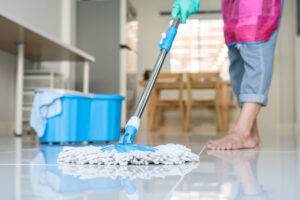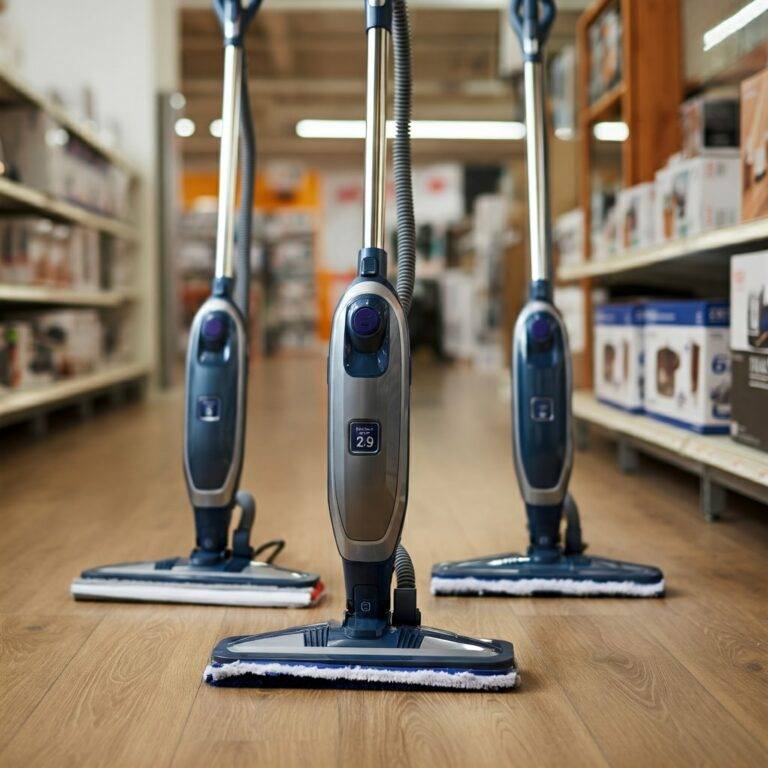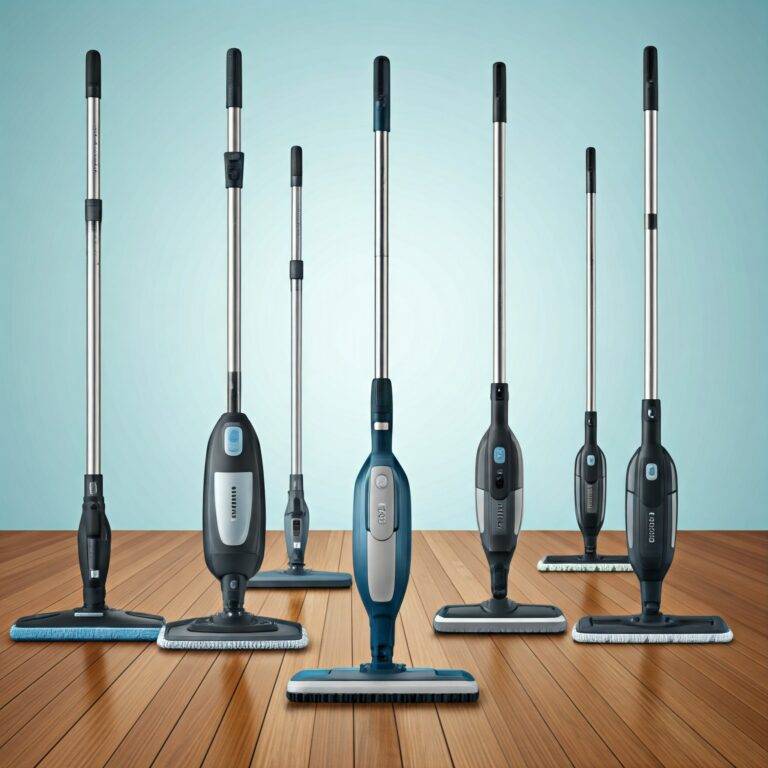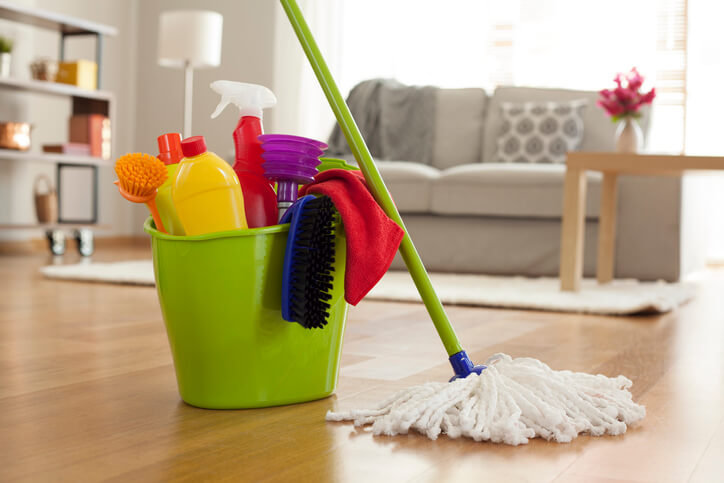When it comes to maintaining the beauty and longevity of your wood surfaces, choosing the best wood cleaner is essential. Wood cleaning products not only enhance the look of furniture, floors, and cabinets but also protect them from damage. The market boasts a variety of options, with an average price of $15.79 for top-performing cleaners, typically ranging from $10.06 to $19.961. Notably, about 70% of these best wood cleaners can be found on Amazon, making them easily accessible for consumers looking for effective wood surface care1. In this article, we will discuss the best wood cleaners available based on rigorous testing and user reviews, providing insights into what makes a product truly exceptional2. Stay tuned to learn how these products can help you rejuvenate your wood surfaces effectively.

Understanding the Importance of Wood Cleaning
Keeping wood surfaces clean is vital for preserving their beauty and longevity. The importance of wood cleaning cannot be overstated; regular maintenance prevents dirt and grime buildup, which can damage the finish and dull the appearance over time. For instance, it is recommended to dust wooden furniture every few days or at least weekly to minimize dust accumulation that can affect its look and feel3. Using the right wood cleaners brings several benefits, including preventing allergens and dust, which contributes to a healthier living environment3.
In the long run, neglecting proper cleaning can lead to costly repairs or replacements. Repairing small wood furniture pieces typically costs between $150 to $300, presenting a significant contrast to the price of new furniture, which can run into thousands of dollars3. Employing effective wood cleaning methods ensures that furniture remains in excellent condition, ultimately saving on repair costs.
Conditions such as dry heat can introduce further challenges in maintaining wood surfaces. Dust collected on windows and doors must be regularly cleaned4, while proper polishing every four to six months is crucial for maintaining shine and overall aesthetic appeal4. The right care routines significantly contribute to maintaining wood surfaces, ensuring they remain attractive for years to come.
Additionally, choosing the right types of cleaners matters, as not all cleaning products are suitable for every finish. Homemade wood cleaning solutions, using ingredients like olive oil and white vinegar, offer eco-friendly alternatives that are both safe and effective5. Such solutions can enhance the wood’s natural glow, further emphasizing the importance of wood cleaning in home maintenance.
Key Features to Look for in a Wood Cleaner
When choosing wood cleaning products, certain features can greatly enhance your decision-making process. Look for effective wood cleaners that offer ease of use and efficient cleaning action. Many top-rated options, such as those sold on Amazon, feature user-friendly designs and a residue-free finish, ensuring that your surfaces remain spotless without an extra film6. Additionally, consider the types of scents available; eco-friendly options often have naturally derived fragrances that can be appealing.
Quality wood cleaners vary in price, with average costs ranging from $10.06 to $19.96, depending on the type and formulation6. For instance, wipes typically cost around $18.56, while spray cleaners can be found between $15.38 and $19.95. Some products, like hypoallergenic formulas, cater to specific consumer needs and ensure safety for sensitive environments6. It’s beneficial to assess whether the wood cleaner is designed for particular uses, such as for furniture, floors, or decks, enhancing its effectiveness in tackling different cleaning tasks.
Attributes like effectiveness, scent, and ease of use were critical in evaluating wood cleaners during comprehensive tests. Bona Hardwood Floor Cleaner received top marks for its performance2. Mr. Clean Finished Floor Cleaner was considered the best value product, showcasing that higher price does not always equate to better results2. Always keep in mind your cleaning needs to select the best product that aligns with both your household and environmental values while ensuring a clean, gleaming finish.
Top Wood Cleaners in the Market
The market features numerous top-rated wood cleaning products designed to suit various needs. Among these, the TriNova Wood Cleaner & Conditioner is recognized for its oil-free formula, making it effective on furniture surfaces. Users have rated it highly, achieving 4.5/5 for effectiveness and a perfect score of 5/5 for value7.
The Method Squirt + Mop stands out due to its ease of use, earning a remarkable 5/5 rating. Its pleasant scent and effective cleaning capabilities make it a favorite in the realm of best wood cleaners7.
For those seeking dedicated care for their wooden items, Howard Products Orange Oil Wood Polish is noteworthy. This product not only cleans effectively but also brings a glossy finish while removing tough grime, achieving a perfect score of 5/5 for effectiveness7.
Another comparative favorite is the Murphy Original Formula Oil Soap, ideal for cleaning wood trim and molding. It offers a gentle touch that requires no harsh ingredients while delivering quality results8.
Old English Wood Polish and Restorer excels in maintaining the beauty of darker wood furniture, helping to conceal scratches and nicks8. Each of these market-reviewed wood cleaners has been evaluated for performance and user satisfaction, ensuring customers can find the right product to keep their wood floors and furniture in top condition.
For more detailed comparisons, check out the full review of the best wood cleaners available here, assisting you in making an informed choice in selecting top-rated wood cleaning products that meet your needs.
How to Use Wood Cleaner Effectively
Using wood cleaner effectively requires a careful approach that maximizes the results while ensuring the longevity of your wood surfaces. Start by reading the manufacturer’s instructions for the wood cleaner of your choice, like Bona or Method, for proper application methods. Applying cleaner with a soft cloth or microfiber pad ensures even distribution across the wood surface9. For stubborn stains, let the cleaner sit for a few minutes before wiping it away for deeper penetration, which aligns with effective cleaning techniques.
Weekly cleaning is advisable to avoid scuffing, and addressing spills immediately can prevent long-lasting damage10. Utilizing microfiber towels during this process boosts efficiency due to their superior dust-trapping capabilities, having over 10 times more surface area than traditional cotton9. It’s essential to test cleaners in a small, inconspicuous area before widespread application to avoid unintended damage10.
For different types of wood, tailored approaches are necessary. For instance, oak can be prone to water damage if not sealed correctly, while walnut requires gentler cleaning to avoid scratches9. When maintaining unfinished wood, using a barely damp cloth is recommended to control liquid absorption10. Reapplying cleaner regularly contributes significantly to the overall effectiveness of your wood surface care tips.
In cases of heavily soiled wood furniture, products from Howard Company, such as Clean-A-Finish and Restore-A-Finish, may be required to tackle tougher grime and stains9. Protecting your furniture also involves preventive measures like using felt pads under legs and positioning wooden pieces away from direct sunlight to minimize damage from heat and humidity10.
DIY Wood Cleaning Solutions
For those seeking to create their own cleaning products, DIY wood cleaner solutions offer an economical and effective option. A simple recipe might include mixing 1/4 cup of white vinegar with 1 1/2 to 3/4 cup of distilled water, along with 2 tablespoons of olive oil to moisturize and polish surfaces. Adding about 20 drops of lemon essential oil enhances both the fragrance and cleaning properties of this natural wood cleaning product1112. Using these homemade wood cleaning recipes ensures that households minimize exposure to harsh chemicals, making them safe for families and pets12.
Glass spray bottles are recommended for storing these mixtures, as they are durable and can help preserve the effectiveness of essential oils. It is important to test any new cleaning solution on a small area first, especially if the wood has a delicate finish1113. Users should avoid letting undiluted vinegar sit on wooden surfaces, as it can cause damage12. With the right precautions, these natural wood cleaning products can maintain the beauty and longevity of your wooden furniture.
Tips for Maintaining Wood Furniture
Regular maintenance is critical for extending the life of wood furniture. To keep surfaces clean, use a microfiber cloth to remove dust frequently. This practice not only prevents a buildup of particles that can dull or scratch the finish but also helps improve indoor air quality, especially for those prone to allergies and asthma14.
When cleaning, opt for a mild nonalkaline soap diluted in water. Always remember to pre-test the solution on an inconspicuous area to avoid any damage15. A soft, damp cloth followed by a dry cloth is usually enough to clean the finish effectively. Avoid using vinegar, bleach, or ammonia-based cleaners, as these can harm the wood’s finish1516.
To shield your wood surfaces from scratches and heat damage, utilize coasters and trivets. Regularly applying a specialized wood polish can enhance the appearance and provide protection16. Additionally, keeping the humidity levels in your home between 35% and 45% is crucial to prevent warping or cracking16.
For effective wood preservation, consider using a mixture of olive oil, denatured alcohol, gum turpentine, and strained lemon juice to restore grimy surfaces14. Following these wood furniture maintenance tips will not only maintain the beauty of your wood but also prolong its durability over time.
For more detailed wood furnituremaintenance15.
Troubleshooting Common Wood Cleaning Issues
Encountering wood cleaning problems can be frustrating, yet identifying the specific issue is the first step in solving wood surface issues effectively. Streaks left by cleaners are a common concern, often resulting from uneven application during cleaning. To address this, use a microfiber cloth, applying the cleaner evenly for a thorough finish. In cases where residue remains from oil-based products, switching to a water-based cleaner may yield better results17.
When facing stubborn stains, specialized products can facilitate deeper penetration into the grime. For instance, the Therapy Clean Wood & Cabinet Cleaner Kit is specifically designed for tough cleaning tasks. It is important to recognize that cleaning and polishing techniques should vary depending on the wood finish. Wood care troubleshooting requires that users adapt their methods to hard surface sealed, painted, waxed, or oiled finishes17.
Incorporating a DIY solution might be advantageous as well. For example, the mixture of 3 parts oil to 1 part vinegar can serve as a safe and effective cleaner. Not only does this DIY furniture cleaner work well on white watermarks, but it can also address moderate water damage on wood, enhancing its appearance through proper maintenance18.
Lastly, if your wood cleaning efforts seem inadequate, reassess the cleaning products being used. Opting for alternatives like Sal Suds can help, as this product boasts over 60% biodegradation after 28 days. Employing the right solution contributes significantly to solving wood surface issues while ensuring your furniture remains in optimal condition1718.
Protecting Your Wood Surfaces
Protecting wood surfaces is crucial for their longevity and aesthetic appeal. Regular maintenance plays a significant role in preserving wood, particularly when it comes to safeguarding wood furniture from dust and moisture. Implementing strategies such as using furniture polish can create an effective barrier against dirt and UV light. For instance, applying natural products like Howard Products Orange Oil helps in preserving wood while maintaining its luster.
Implementing a monthly deep cleaning routine, especially for heavily utilized kitchens, is key. The frequency of needing to clean wood kitchen cabinets can vary based on usage, with oils from cooking dispersing and attracting dust, thus requiring weekly touchups for maintenance19. Waxing or oiling cabinets every six months protects against grime and debris buildup, ensuring the beauty of your wood is not compromised19. Using soft cloths is recommended to avoid stripping the wood finish, and it’s essential to stay clear of ammonia and other harsh chemicals that can damage the wood20.
In high-traffic areas, consider placing rugs to prevent scratching of wood flooring. Regular cleaning helps remove allergens and germs, with wooden floors needing attention at least once a week21. To achieve a thorough clean, it’s advisable to utilize products specifically formulated for wood, like Lysol® Clean & Fresh Multi-Surface Cleaner, while avoiding wet mops that can harm finishes due to moisture retention21
For those seeking natural alternatives, Castile soap and water serve as gentle cleaners for wood surfaces. Incorporating these practices into your cleaning routine enhances protection for wood surfaces, ultimately prolonging their lifespan. For further inquiries on maintaining your wood surfaces, feel free to reach out here.
By understanding how to protect and maintain wood surfaces, you will ensure that your furniture remains beautiful and functional for years to come192120.
Conclusion: Finding Your Best Wood Cleaner
Choosing the best wood cleaner is essential for maintaining the beauty and longevity of your wooden surfaces. From popular commercial products like Glitsa, which offers a pH-neutral formula suitable for all finishes, to household favorites such as Bona, it’s important to select effective wood cleaning products that meet your specific needs. Additionally, cleaners like Arboritec’s Clean n’ Coat stand out for their residue-free cleaning and anti-microbial properties, ensuring both cleanliness and hygiene for your living space2223.
Regular maintenance plays a pivotal role in wood care. For high-traffic areas, it’s recommended to clean weekly, while other sections may only require once or twice a month. Spot cleaning spills immediately and avoiding harsh scrubbing can prevent unnecessary damage and extend the life of your wood floors24.
Ultimately, investing in a suitable wood cleaner combined with responsible maintenance practices will result in a cleaner and healthier environment. By understanding your options and making informed choices, you can ensure that your wood surfaces remain stunning for years to come24.
FAQ
Q: What is the best wood cleaner for furniture?
A: The best wood cleaner for furniture often depends on your specific needs, but popular options include TriNova Wood Cleaner & Conditioner for its oil-free formula and Howard Products Orange Oil Wood Polish for its excellent polishing capabilities.
Q: How often should I clean my wood surfaces?
A: It’s recommended to clean wood surfaces regularly, ideally every couple of weeks, to maintain their beauty and prevent dirt buildup. Periodic deep cleaning is also beneficial.
Q: Can I use vinegar to clean my wood furniture?
A: While vinegar can be an effective natural cleaner, it’s best to avoid using it on certain finishes like shellac or wax, as it can cause damage. Always test first on a small area.
Q: Are there any eco-friendly wood cleaners available?
A: Yes! Many brands offer eco-friendly wood cleaners, such as Method Squirt + Mop, which uses plant-based ingredients and avoids harmful chemicals, making it safe for families and pets.
Q: How do I remove tough stains from wood?
A: For tough stains, try using specific products designed for stubborn grime, like Therapy Clean Wood & Cabinet Cleaner Kit. Allowing the cleaner to sit for a few minutes before wiping can also enhance effectiveness.
Q: What are some tips for maintaining wood furniture?
A: To maintain your wood furniture, regularly dust with a microfiber cloth, avoid direct sunlight, use coasters and placemats, and apply appropriate wood cleaners or oils periodically to nourish the wood.
Q: What should I do if I notice streaks after cleaning?
A: If you notice streaks, ensure you’re applying the cleaner evenly, preferably with a microfiber cloth. If streaks persist, consider switching to a different cleaner that’s less oily and more water-based.
Q: Can I use a homemade wood cleaner on all surfaces?
A: Homemade wood cleaners, such as a vinegar and water mixture, can be used on many surfaces but aren’t suitable for all finishes. Always conduct a spot test to ensure compatibility before applying broadly.
Q: How can I protect my wood surfaces from damage?
A: Protect your wood surfaces by using furniture polish, applying protective coatings or wax, placing rugs in high-traffic areas, and avoiding exposure to moisture and direct sunlight.
Q: What should I consider when choosing a wood cleaner?
A: When choosing a wood cleaner, consider factors like ease of use, cleaning effectiveness, scent, eco-friendliness, and whether it contains any harmful chemicals to align with your values and needs.



